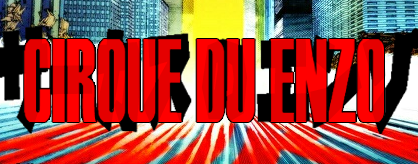
Cirque du Enzo is a stream pack by Zaia.
It is the sequel to Cirque du Lykan (2014). It is named after the Ferrari Enzo and themed after Akira (the manga - 1982).
This is my first pack that uses the Technical Element Notation System, as well as my first stream charts to include attack modifier visual effects.

| Pack Director | Zaia |
| Stepartists | Zaia |
| BPM | 170-220 |
| Songcount | 81 |
| Blocks | 10-19 Full range 12-18 Target range |
| Type | Stream |
| Format | Singles |
| Release Date | Jan 03, 2018 |
¶ Structure
Cirque du Enzo is structured identically to my other stream packs - four charts per song, constructed in the cut-stream lower format. Only the four dark psytrance/hi-tech songs and the hidden simfile don't have lower charts. Like my other stream packs, this pack features the "internal progressions” design mechanic (described on the Cirque du Lykan page).
Some simfiles contain charts with technical elements, and there are two types:
- Simfiles with charts that have techs+stream in Expert, no techs+no stream in Hard, techs+no stream in Medium and no techs+no stream in Easy
- Simfiles with techs in all difficulties, but combined with cut-stream lowers
Some simfiles contain attack modifiers via .xml file (annotated as Visual FX). These mods will only function on StepMania 3.95-based builds of ITG (includes OpenITG).
Charts description fields contain the stream breakdowns as well as the tech codes.
¶ Development
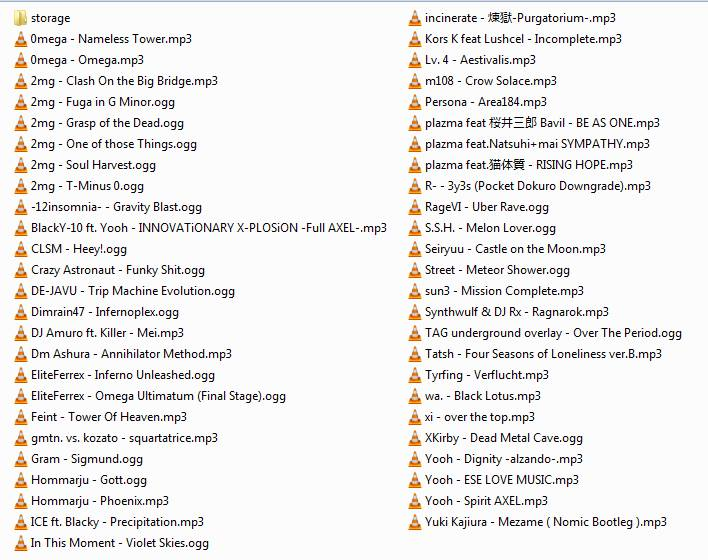
Given the broad success of Cirque du Lykan, a sequel was only a matter of time. Alll of the packs that had happened in the interim were in some way offspring that could trace their ancestry back to Lykan: Cirque du Zeppelin was structurally identical to Lykan but slower. The Helblinde line grew directly out of Lykan, as did Betwixt & Between, the originally-planned follow-up project.
Plans for Cirque du Enzo were laid down slowly. New packs of mine start off in earnest- nearly all have begun their lives as a text document numbered from 1 to 30 and songs are gradually added to fill it up. This is called the concept stage. Once enough are there, it can move up in priority and enter the Production stage. For the first year or so of development, the pack would only exist as this text document and maybe as a folder of .ogg files that slowly grew in size.
In December 2014, I gave Cirque du Enzo its name (for the first half of 2014 it was “Lykan 2”, and then “Cirque du Agera"), but it existed only as a small text list of under 10 songs for a year whilst it gestated. Songlists for Cirque projects differ from the others in that since they aren't grouped in a very particular manner (generally by artist, which has a limited number of potential songs), the songlist can only grow organically as new songs are discovered and added and others are removed. Enzo started with 50 songs but quickly grew to 60, and it was during active development from October 2016 through to the end of 2017 that it ballooned to 76 and then finally to 81 to account for new music drops that occurred at Comiket 93. About 40 or so songs passed through the project but were later rejected, and about 10 had charts when they were removed.
The first chart written for the pack was Sigmund, late in 2015. It was submitted to pack project Team POLYGON (Mar 2016) with an early version of the Enzo graphics. This featured chart was altered a bit for the final release.
I also developed some helpful self-motivational strategies to help keep me moving along. I didn't keep a strict stepping order; just a loose one to consciously step less hype songs first and more hype ones later (though I could argue this helped contribute to the higher number of rejects that had already been stepped). The other thing I did was keep a separate folder of only .ogg files and whenever that song had finished being stepped, I deleted it from the folder.
That way, I could see the number of files gradually dwindle as I worked, and I would listen to the songs in this folder to get ideas for charts and make decisions about which ones to step next. As the number of files in this folder decreased, the number of finished draft simfiles increased.
The addition of techs to the charts was not something that took place until quite late in the pack's development. The first simfile to be written to have technical elements was GHOST, when the pack already had 60 existing techless stream simfiles (220-240 charts). When I added that simfile, I discovered a potential
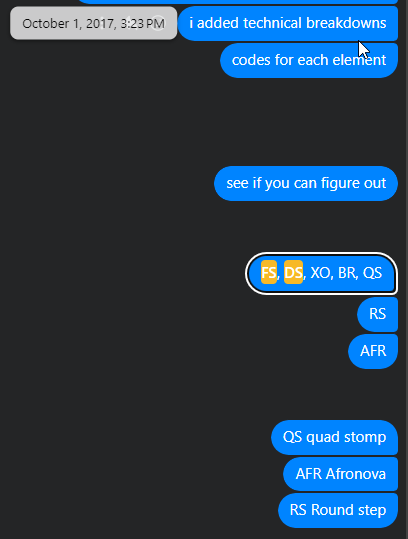
problem - if I keep adding simfiles with techs, or write simfiles that have a mixed set of technical and techless charts, players may have difficulty remembering which ones had them, putting them at risk of “sightreading” the techs every time they played the chart, or mixing them up with another simfile.
The best solution to this issue was to devise a system that performed very similarly to the Stream Breakdown Notation System, but with techs. I therefore drafted a series of two-letter codes to be able to add to a chart's description field that would notify the player at the songwheel of the types of technical elements that could be found within that particular chart. I was to call these “tech notations”.
This was not the first time I had ever devised using a code to indicate a specific non-standard movement type: The oldest use of a tech code I could find in my work was A Gunshot to the Head of Trepidation from Dropbear Awareness Pack (2011), which has fs in the description field for Expert and the oldest using the standardized modern formatting was Vortex Infinitum from Cirque du Zeppelin (2014), which has FS, but neither of these uses represented a conscious effort to build a database of codes that could be expanded into an infrastructure - they were just one-off usages.
The first series of codes were very simple and covered the most common elements, but there were simultaneously some codes that were extremely obscure and meant only as easter eggs. The system was designed such that each code should be two letters in length and capable of being derived by playing the chart. They also had to be concise, as they would be fit into description fields alongside the stream breakdowns, which stood a risk of extending the number of characters to detrimental lengths. Two letters, all capitalized and separated by a single space was to be the default formatting.
According to my text files, Xepher was the first to receive the codes starting September 20, 2017.
The development of Visual FX charts took place when I was in the US over the summer of 2017 for Armajejjon. Vanishing Point was intended to be the primary simfile to test the concept, and work took place over the week between July 24-31. I had an inverted sleeping schedule, so I would be up all night on Milkopia's laptop working on it without interruption. It took the entire week of “full-time” work to finish the chart. The reason for this was because mods couldn't be seen in the editor - they had to be tested in game mode, which meant playing the entire chart every time I made a change and wanted to test it. As I was writing my chart's mods in order, and it was my first time doing it on this scale, and the song was 5 minutes long, it became increasingly more time-consuming to write, but I persevered and was able to complete it. I couldn't even chat on Facebook because all the homies I would normally chat with were in the basement sleeping.
The final chart I stepped for the pack was Longinus, just a couple of days before release. I tried something very experimental with this one - I stepped it without listening to it beforehand. I listened to a couple of 1-second parts by clicking around the track, and I knew just from those that it was viable, so I set up the skeleton and wrote the chart whilst I was also listening to the song for the first time. I wouldn't get to hear the entire song from start to finish until the chart was completed. Longinus was an extremely important chart for me, and like Destination Talos (Cranked Pastry), Heaven's Fall (Helblinde) and Solar Storm (Scrapyard Kent) before it, marked a paradigm shift that became a key turning point for me.
This was Cirque du Enzo's initial songlist vs its actual songlist (at March 2017).
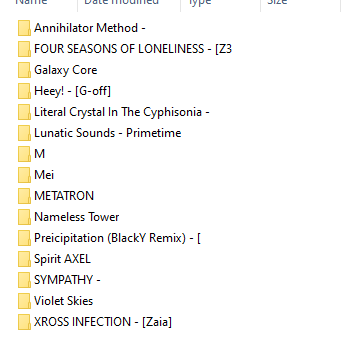
¶ Artistic Influences and Chart Design
Enzo's stepping style capitalized on all the charts I'd stepped before it. The bpm range and the music genres that are typically found in this series are the ones I'm at my strongest in, so this pack represented the culmination of that rapid growth period between mid-2014 and now (jan 2018).
I had a much clearer sense of the music now, and seemed to have enough experience now to be in control of most of the chart that was being written. No longer were there sections I found myself unable to pattern, or measures that I had to fill with random streams. I seemed to be able to come up with something no matter what was or wasn't occurring in the music. Axis-swapping and 16th shifting was employed to full effect for unbroken streams, as were more complex concepts like tension wind-ups and dimensional projection, but the most significant breakthroughs were those that involved relative pattern scaling.
There are two types of pattern scaling: absolute pattern scaling and relative pattern scaling.
- Absolute pattern scaling can exist in a vacuum and compares the movement deltas of patterns to a single reference point - the point of zero movement (a single note), and the entire song's pattern difficulty is scaled to that point. All patterns maintain a static artistic intensity.
- Relative pattern scaling cannot exist in a vacuum, and requires pre-existing patterning to establish the base reference point of pattern difficulty. This allows the reference point to be moved up or down the intensity scale, and other patterning in the chart will be compared back to that point. This means that two different charts that employ identical pattern structures are capable of having different pattern scaling curves, depending on how the baselines are defined. This can help to deepen the relationship between steps and music and clarify a chart's unique bond with its song. The unique signature of a chart is shifted away from the raw patterns that are used and towards the relationships the patterns have with each other, which opens up the number of permutations of pattern combinations by an exponential degree.
A lot of charts in Enzo employ this type of pattern scaling because the greater diversity of the music allows for a larger number of combinations. Since I'd been stepping artist-specific packs for the past four years, I'd been forced to optimize my skillsets to compensate for the artificial restriction, and once those were lifted, the creativity was able to flow freely.
The technical charts I included were all targeted towards hard songs players. There wasn't a lot of content like this made by a stamina player, for other stamina players. This meant that they used less complex techs, but used them at higher speeds or within longer unbroken streams. I had already discovered that I had an affinity for doublesteps (something that hadn't yet been widely picked up by the metagame), and especially doublesteps within 16th notes (Grayed Out -Antifront-, Hellfire), so I stepped several charts with those to start to fill the content vacuum. I also included some exotic tech types like crossover brackets (The King of Lions), Roundsteps (Xepher), charts with many elements (Siva), and experimental hybrid techs (GHOST, K.Y.A.F.A). I classified tech use in this way differently to a more pure “tech/FA” chart because it remained player-oriented and the writing was derived from the music using the same abstract principles from which vanilla streams were derived. It was less strict in terms of its technical qualities because a value trade was being made.
Since my stepping gets stronger as I progress through a single pack, and I save the best songs for last, this convergence allows those charts to become my best and favorite charts in any given pack. Longinus became that chart. Everything I'd been learning and practicing was able to be applied to the entire chart, and this was the first time I felt in control of the entire chart. At all points of the chart, pattern scaling was being respected, whilst also layering with fundamental chart structure design principles. Tension wind-ups were employed to appropriate effect to control mood and were incorporated into the chart layering without compromise; thankfully, nearly no value trades needed to be made. Not listening to the song beforehand may have helped in some areas, but I don't feel it had any notable impact on the final result. It is important to bear in mind that at the time the chart was written (Jan 01, 2018), it marked the peak of all my abilities of the time; and many of these were fresh and hadn't matured, so whilst this represented the “end” of this phase of my stepartist career, it was also the beginning of a new one. Longinus was the first time all the major breakthrough skills I'd acquired had crossed over in a big way, and it opened the door to the next creative plateau to pursue: sculpting these layers of chart structure into a perfect balance.
¶ Graphics
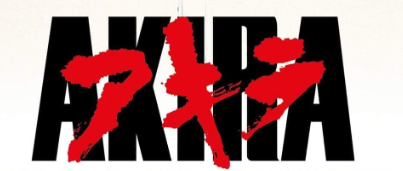
Enzo's visual theme is based off of Katsuhiro Omoto's Akira, a manga and an anime film from 1982 and 1988 respectively. Visually striking, iconic, and a seminal piece of media that continues to exert influence across the industry to this day.
The graphics for Enzo were made in early 2016, as I was preparing my submission for the Team POLYGON project, in which I was intending to submit a teaser simfile for the pack (after Jan 16 and before Mar 27). At this time, I had not decided on a way to style the katakana and went with placeholder text.
One of the reasons Akira was chosen was because of the frequent use of the color red, which is synonymous with the auto manufacturer Ferrari, which is known for its red sports cars.
The bright colors of the background art were a nice complement for a number of the uplifting, atmospheric or “clean” types of songs that comprise a large amount of the soundscape for the pack, and this results in a visual style that portrays a kind of utopian optimism. The specific image used supports this - Neo-Tokyo was a ravaged, corrupted, crime-riddled and dystopian city that, throughout the course of the story, would undergo a rebirth after its destruction and become the Great Tokyo Empire, and the children were riding towards the sun, out of the darkness and into the light to build their vision.

Determining how to stylize the katakana took a few tries to get right. The initial kana as seen in the Sigmud preview was シルク・ドウ・エンゾオ or “Si-ru-ku・do-u・E-n-zo-o”, and this had far too many kana to fit over the text in the way Akira's three kana easily can, so I reduced the number of kana by using サーカス・の・エンソ or “Saa-ka-su・no・E-n-so”, whch read much more cleanly. Still, it was too many kana to fit over the english title, so it had to go behind it. The decision was made during the production to invert the colors so that the text color was red and the katakana were in black.
A silhouette of a Ferrari Enzo from front-on is visible in the background image at the bottom of the “Du”.
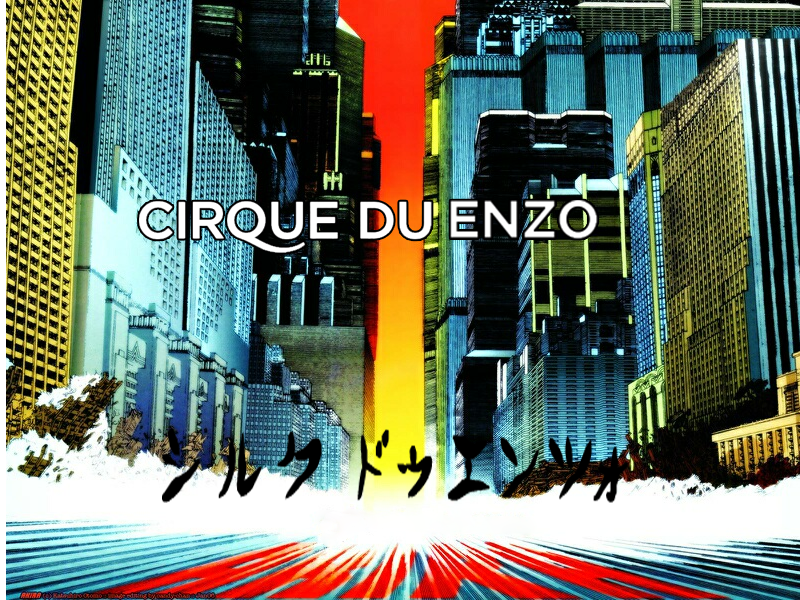
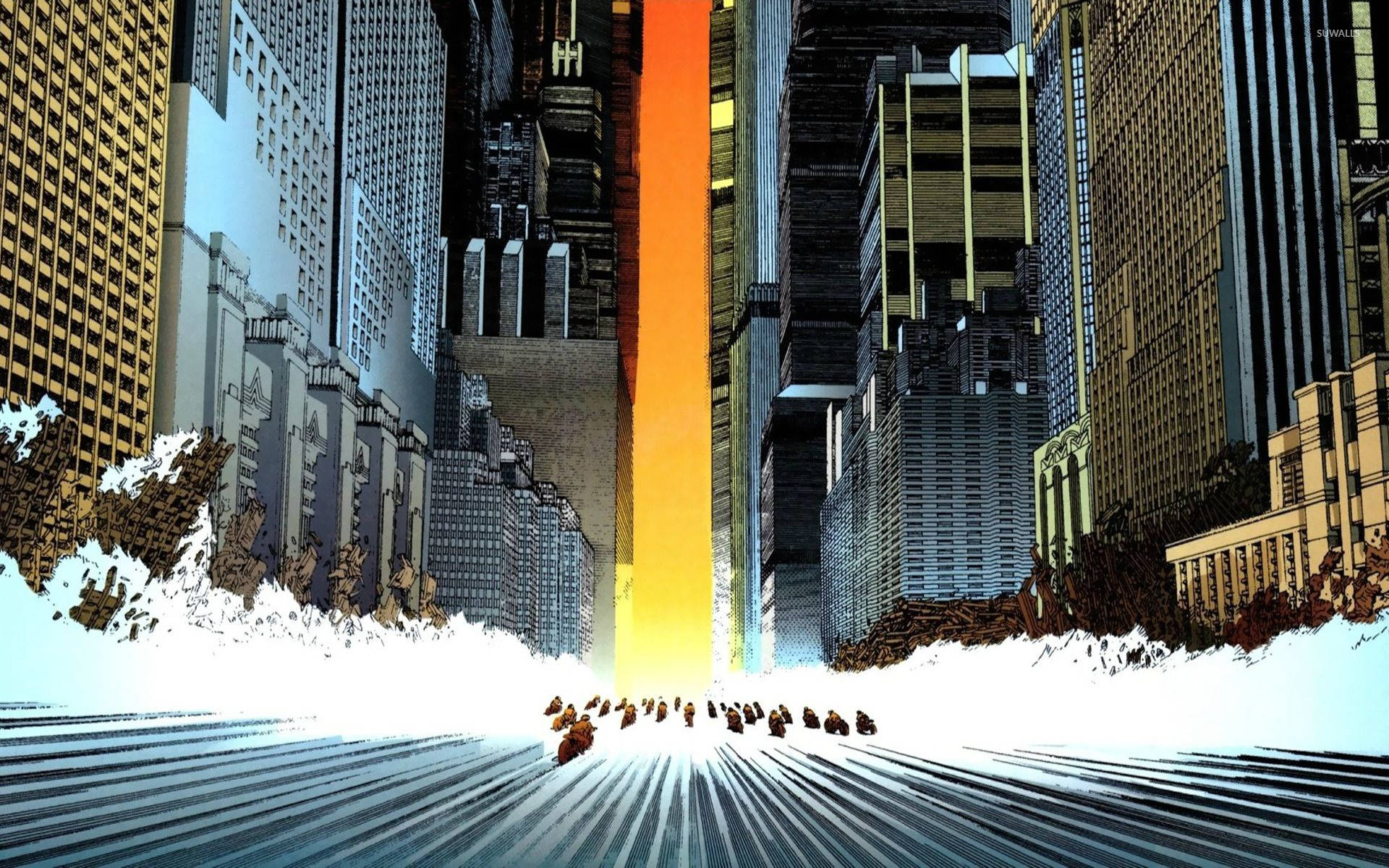
¶ Songlist
Cirque du Enzo contains 81 songs. The release sheet notes can be found here.
| Song | Artist | BPM | Notes |
|---|---|---|---|
| 8a55 | 青龍 (Seiryu) | 191 | |
| Aestivalis | Lv. 4 | 175 | |
| Anomaly | かめりあ (Camellia) | 210 | |
| AO-Infinity | 青龍 (Seiryu) | 191 | |
| Aparajita | xi | 212 | |
| Area184 | Persona | 184 | |
| Astronaut | ym1024 | 178 | |
| BE AS ONE | plazma feat Bavil | 200 | |
| Black Lotus | wa. | 200 | |
| Black Room | Mergel ft. Omnipresence | 180 | |
| BLAST ALGORYTHM | Fele | 200 | |
| Bone Crusher | V.A.G.A.B.O.N.D | 180 | |
| Boomerang Rush | Goreshit | 207 | |
| Cannonball | Weaver ft. Fran (Scott Brown Mix) | 170 | |
| Castle on the Moon | 青龍 (Seiryu) | 191 | |
| Clash on the Big Bridge | 2mg | 193 | |
| Cold Breath | Shiki | 196 | Error notes in the release sheet refer to an unfixed offset issue, but I reviewed the chart just and can't find what I'm referring to |
| Crossroad | Lapix ft. Luschel | 175 | |
| Cyber Spell | Evoltrias | 190 | Correct artist spelling is “Evolt Rias" |
| Cygnus | Jun Kuroda | 178 | |
| Dead Metal Cave | Xkirby | 200 | |
| Death Scythe | SHIKI | 182 | |
| Deus Ex Machina | 青龍 (Seiryu) x BlackY | 208 | |
| Dignity -alzando- | Yooh | 193 | |
| Dimension Ninja | Street | 174 | |
| EGOISM 440 | U1 High-Speed | 220 | |
| Emotional Skyscraper ~World's End | Demetori | 200 | |
| ENDYMION | fallen shepherd fr. RabbiTon Strings | 220 | |
| ESE LOVE MUSIC | Yooh | 197 | |
| Fortuna Redux | Fractal Dreamers | 200 | Hidden simfile. Contains FX |
| Fuga in G Minor | 2mg | 203 | |
| Fullspec | USAO | 198 | |
| Funky Shit (2014 WIMP Version) | Crazy Astronaut feat. VG | 175 | cdtitle missin |
| GHOST | かめりあ (Camellia) | 220 | |
| Gott | Hommarju | 195 | |
| Grayed Out -Antifront- | Getty vs. DJ DiA | 190 | Easy has a doublestep at M66 that shouldn't be there (Easy was not meant to have any technical elements) |
| HAVOX | BlackY vs. Yooh | 210 | |
| Heart Hell Funky | LU-I | 205 | |
| Hellfire | Memme | 170 | |
| Imprinting | Sakuzyo | 175 | |
| Incomplete | Kors K ft. Luschel | 174 | |
| Inferno Unleashed | EliteFerrex | 175 | |
| Infernoplex | Dimrain47 | 175 | |
| INNOVATIONARY X-PLOSION -Full AXEL- | BlackY10 (Remixed by Yooh) | 180 | |
| Journey in the Dark | Mergel ft. Omnipresence | 200 | |
| K.Y.A.F.A | かめりあ (Camellia) | 220 | |
| LegenD. | Yooh | 205-206 | |
| Longinus | xi | 212 | Contains minor FX |
| Melon Lover | S.S.H. | 180 | |
| Meteor Shower | Street | 174 | |
| Mezame (Nomic Bootleg) | Yuki Kajiura | 170 | |
| Mission Complete | sun3 | 195 | |
| Ninelie (REDSHiFT X Vesuvia Remix) | Aimer with chelly | 178 | |
| NUCLEAR-STAR | かめりあ (Camellia) | 199 | |
| Omega | 0mega | 192 | |
| Omega Ultimatum | EliteFerrex | 175 | |
| Over the "Period" | TAG underground overlay | 160-210 | |
| Over the Top | xi | 202 | FX and non-FX versions included. The FX version isn't 100% functional, for reasons I was unable to determine (not all the attacks would work). |
| Overwatch Main Theme | 2mg | 193 | |
| Quietus Ray | xi | 200 | |
| RISING HOPE | plazma feat. Maburu Choko | 200 | |
| Salvation | Yoh | 192 | |
| Shelter (Assertive & Mitomoro Bootleg) | Porter Robinson & Madeon | 220 | |
| Sigmund | Gram | 200 | |
| Siva | Diceros Bicornis | 212 | |
| Soul Harvest | 2mg | 203 | |
| squartatrice | gmtn. Vs. kozato ft. LUZE | 180 | |
| Stay Alive | Jun Kuroda | 174 | |
| Survive or Perish | Indivision | 177 | |
| Sweet Dreams | A.U.M. | 197 | |
| T-Minus 0 | 2mg | 203 | |
| The King of Lions | かめりあ (Camellia) | 210 | Has crossover brackets |
| Tower of Heaven | Feint | 175 | |
| TRIP MACHINE EVOLUTION | DE-JAVU | 190 | |
| Trvnscendence | Crazy Astronaut X Montti | 172 | |
| Uber Rave | RageVI | 175 | |
| Vanishing Point | Fraxtil | 174 |
Visual FX and no-FX versions have different breakdowns in the description field of Expert:
|
| Verflucht | Tyrfing | 180 | |
| Vermilion Universe | Cleantears | 174 | |
| Xepher | Tatsh | 170 | |
| Yggdrasil | Gram vs Kobaryo | 200 | Fortuna Redux is hidden in this simfile's folder |
¶ Reception and Retrospect
Cirque du Enzo was enormously succesful and is currently one of the highlights of my career. It was a very large pack with a variety of ambitious ideas, many of which had not been explored in the metagame, but it managed to do this whilst simultaneously consolidating existing ideas and expanding on the soul of Cirque in a natural way. Charts from this pack continue to be used in ECS tournaments, six years on, and it maintains an ongoing presence that few other packs of its generation share. The most prominent criticism of this pack are the instances of overratings, particularly in Expert charts, and the incompatibility of the visual FX charts with StepMania 5-based game engines.
Most notably, the lasting legacy of this pack is in the tech spaces, in which the technical code notations went on to become a significant presence in the metagame and, like the stream breakdowns had done four years earlier, permanently altered the relationship between player and content.
I look upon Enzo very favorably and consider it one of my defining works. I accomplished everything I'd set out to do, grown through the process and made new and unintended discoveries about stream charts that I could add to my skills to help foster further growth. Much of what I learned by the end of Enzo would be applied to Cirque du Huayra, and later, the Stamina Showcase 2 event that took place across 2018.
¶ Trivia

- A lot of this pack seems to be synced to +0.008 instead of the standard +0.009
- There was a patch issued on day 2 of release that fixed some minor issues:
- Area184 had a lingering step at the end that needed removing, as well as a .reapeaks file
- Clash on the Big Bridge had a .reapeaks file
- Charts with doublesteps in the pack use unusual hold markings. The second note on the doublestepped foot features the hold
- This was to make it visually easier to see which foot needs to move in the middle of streams and reduced visual noise by allowing a shorter hold to be used (as opposed to the conventional hold marking on the foot that stays planted)
- There exists a set of edits to the .sm files of all the charts in the pack with techs in them to have conventional tech markings
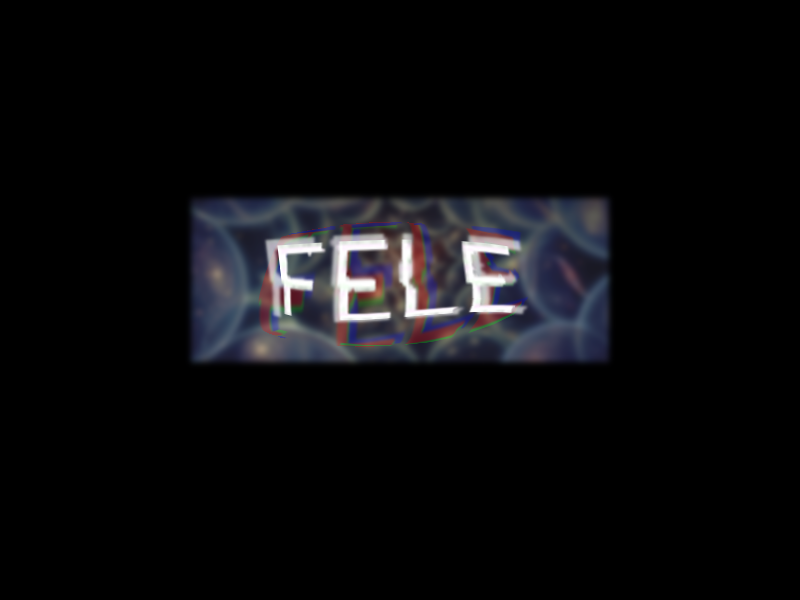
- Fraxtil (Ash Astral) independently developed technical code notations with very similar codes for the pack Barely Playable, which released two days before Cirque du Enzo did
- Fortuna Redux, Longinus, Over The Top, Vanishing Point won't display their visual effects properly because they are coded for SM3.95-base builds of ITG, and not SM5 builds or ITGMania
- Setting
QuirksMode=1inPreferences.iniwill not fix them
- Setting
- Black Room contains a sample from The Legend of Heroes: Trails in the Sky FC at M186/4:08. I added it myself
- The “Your Finished" soundbite is what he says when you use his most powerful S-Craft attack, Black Fang
- BLAST ALGORYTHM has a teaser banner in the background image for what was intended to be my next pack, Fele
- This later became Fele v Liquid E.T. but has since been cancelled/abandoned
- Cannonball is a restep of a chart I first wrote in 2008. It was originally intended for Cirque du Agera (as the “Amazing pack")
- It received unique graphics for use in ECFA2021
- It's based on beatmania IIDX 25 CANNON BALLERS
- Cyber Spell: The artist of this song, Evolt Rias, seems to have left nearly zero digital footprint. I'm wondering how I managed to find this song at all
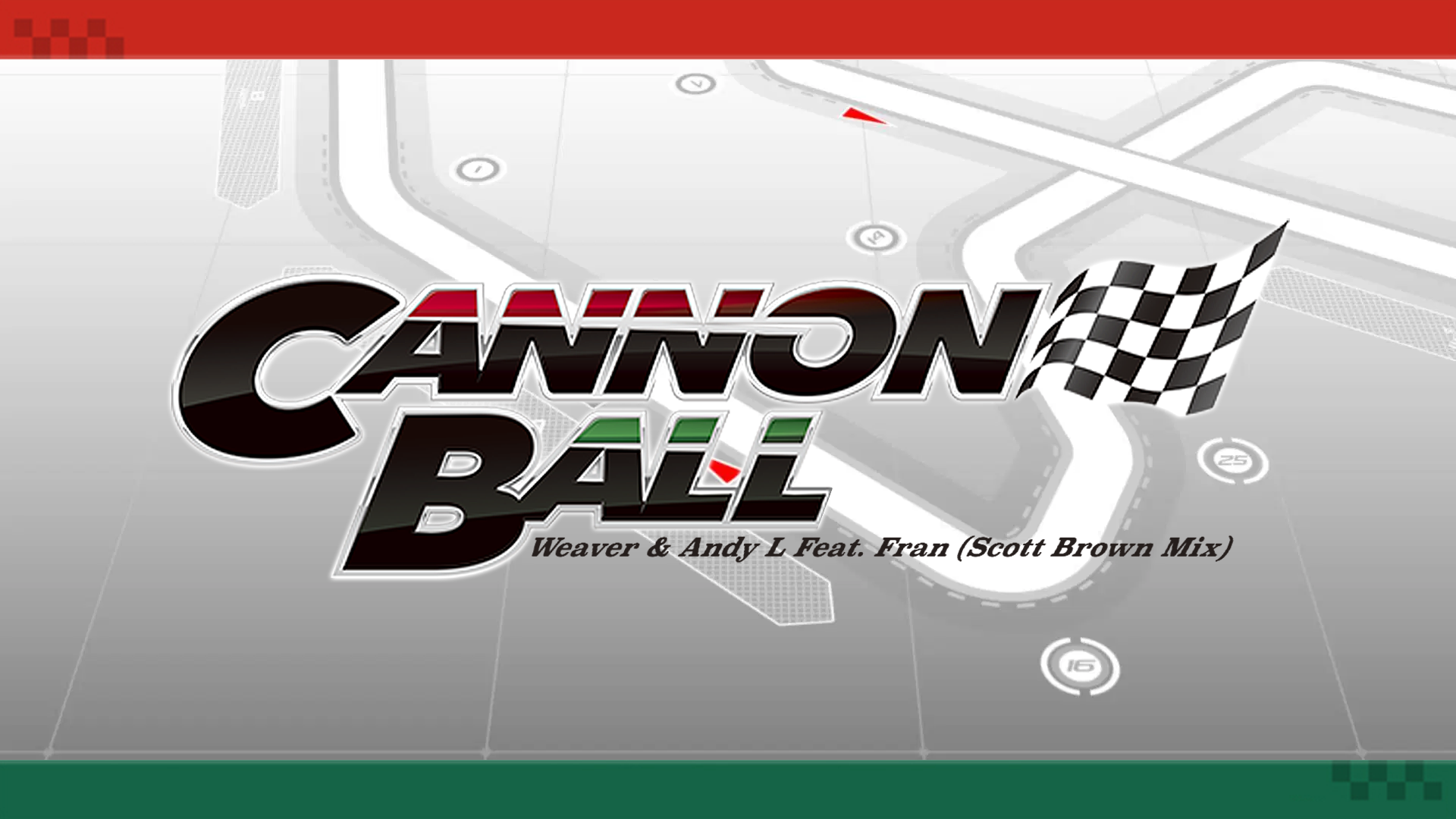
- Hellfire received unique graphics for use in ECFA201
- The bg image is from the anime Fire Force
- Journey in the Dark is one of the songs featured in DJ Asamori - Last Trip
- Starts around 23:17 into the mix
- K.Y.A.F.A is an acronym for “Kill You All Fucking Asshole”
- I can't remember why Fortuna Redux is hidden within the Yggdrasil folder
- The original songlist can be seen in the Cirque du Jackhummer JACK_STATS tab at row 567
- The oldest song that survived to the finished pack was Gram - Sigmund, which was also the teaser song submitted to Team POLYGON
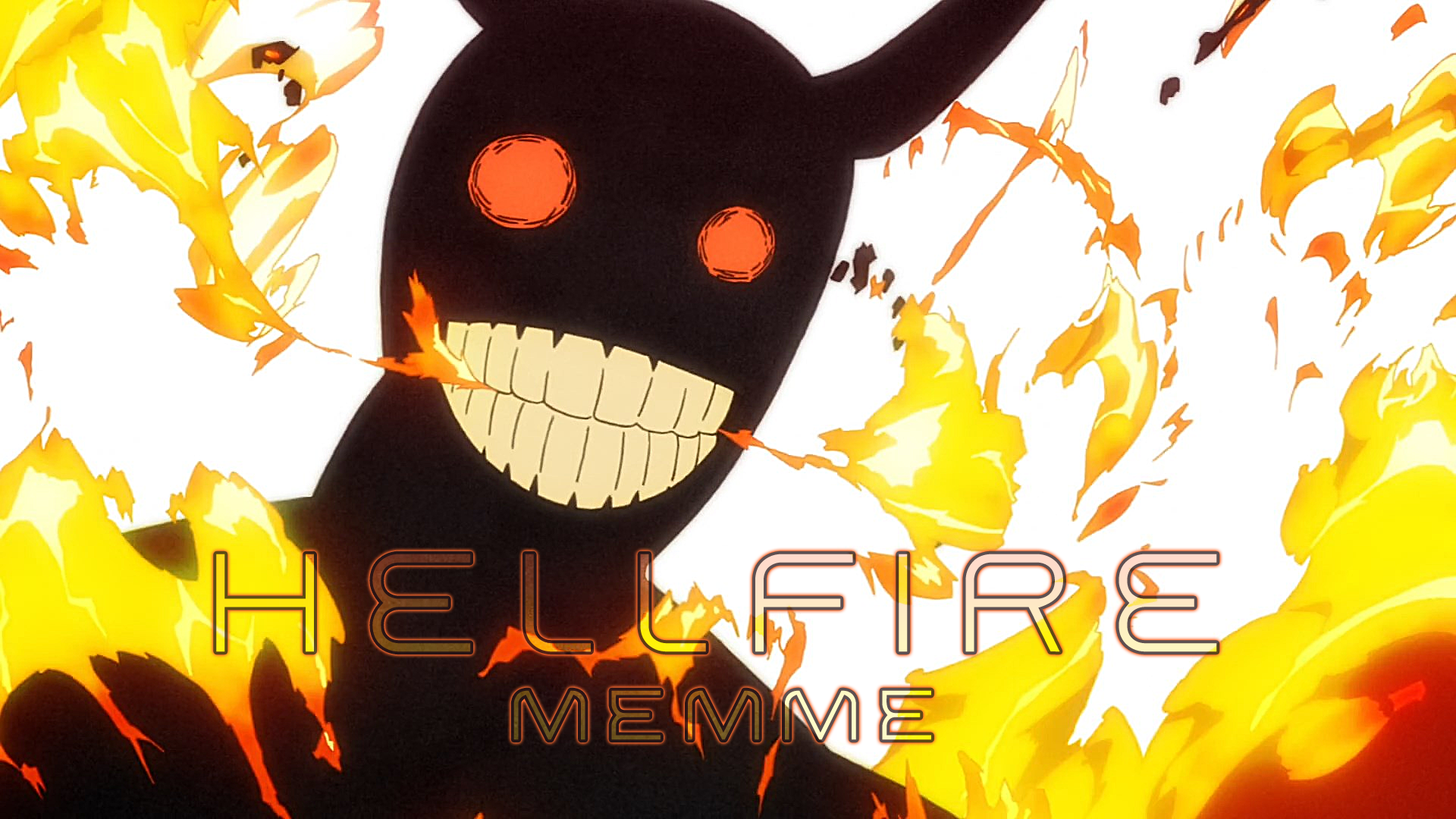
- The songlist shows this in one of its rows:
UNTITLED HELBLINDE BUTTER-FLY REMIX- I was in communications with Helblinde to produce a song sampling Koji Wada's Butter-Fly, to honor his life (he passed away on April 3, 2016)
- Specifically this version of Butter-Fly
- I don't think he was feeling it
- Cirque du Enzo's urban anime theming would continue with Cirque du Miura